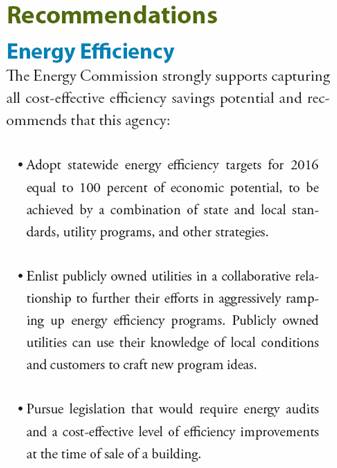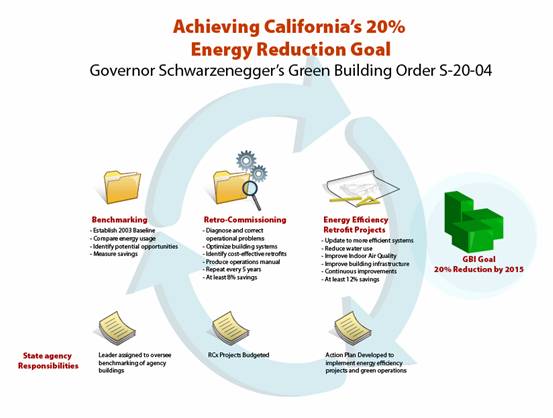Practical Plant Energy Reduction – 2009
Thomas Mason, PE
Course Outline
This course begins with a discussion of strategy necessary to achieve meaningful energy reductions. This is followed by the energy balance for a generic plant - that is, the incoming energy sources, the product stream and the waste stream. Maintenance, perhaps surprisingly, is included, because the costs of changes to achieve energy reduction show up as capital projects or maintenance labor and material costs.
After discussing the plant energy balance, each stream is examined in terms of measurements and controllable variables - that is, the “knobs” available to reduce energy use. The streams are electricity, natural gas, other fossil fuels, water, compressed air, steam, chilled water, process gasses, salable product, waste and reject product, waste heat, waste water, and flue gas.
The concluding section of the course is a checklist, summarizing detailed action items, to achieve both immediate and long-term and expected savings.
The course includes a multiple-choice quiz at the end, which is designed to enhance the understanding of the course materials.
Upon completion of this course, the student will be able to:
- sketch the energy flows of a plant;
- describe installation of survey meters for electricity;
- determine usable variances between a public utility bill and the one from the following month;
- trend both metered elements of public utility bills and variances;
- discuss the practical and political advantages of using contractors to provide and install metering equipment;
- identify essential internal metering locations;
- justify a short-term building shutdown for metering installation;
- gather critical start-up energy usage information following the shutdown;
- recognize the needs for both short-term and long-term metered information;
- identify a 5% reduction in electrical usage achievable within 12-months;
- identify a 5% reduction in steam usage achievable within 12-months;
- identify a 5% reduction in chilled water usage achievable within 12-months;
- identify a 5% reduction in compressed air usage achievable within 12-months;
- identify areas of study for additional electrical usage reductions;
- identify areas of study for additional steam usage reductions;
- identify areas of study for additional chilled water usage reductions; and
- identify areas of study for additional compressed air reductions.
Intended
Audience
This course is intended for Facility Engineers. It is valuable for Facilities Managers, Maintenance Supervisors, and long-range Planners.
Benefit to Attendees
There are both technical and political aspects to energy reduction efforts. If they were easy and painless, they would have been done already. This course clearly identifies valuable efforts and attempts to quantify both the labor cost and production interruptions associated with each. A serious restriction of success is the “knowledge” of personal lacking technical training but holding spending authority. The discussions in the text are intended to help in getting funds approved to achieve the goals.
Course Introduction
The reason this course exists is because Federal and State governments and local executive level personnel are issuing mandates that measurable, annual energy reductions be effected for each facility. On April 21, 2009, California Governor Schwarzenegger made the following statement:
I urge everyone to take the "20% in 20 Days Challenge". If everyone reduced their energy consumption by 20 per cent (and you can do that in just a few days!) we would be well on the way to solving this great climate crisis.
(http://www.thesun.co.uk/sol/homepage/news/special_events/green_week/2387112/Arnold-Schwarzenegger-on-renewable-energy.html)
The California Energy Commission 2007 Report includes the following:

(http://www.energy.ca.gov/2007publications/CEC-100-2007-008/CEC-100-2007-008-CMF-ES.PDF)
Orders have been issued to California agencies to reduce energy usage 20%. Agencies in other states are issuing similar requirements, anticipating legislative mandates and private firms are issuing similar requirements.

(http://www.documents.dgs.ca.gov/green/eeproj/energyrecygraph.pdf)
The goal of this course is to provide action items to reduce energy and document the success.
Course Content
In this lesson, you are required to download and study the following course contents:
Practical Plant Energy Reduction – 2009 (PDF)
Please click on the above underlined hypertext to view, download or print the document for your study. Because of the large file size, we recommend that you first save the file to your computer by right clicking the mouse and choosing "Save Target As ...", and then open the file in Adobe Acrobat Reader. If you still experience any difficulty in downloading or opening this file, you may need to close some applications or reboot your computer to free up some memory.
Course Summary
This course promised immediate, measurable plant energy reductions by replacing lighting fixtures with lower-wattage units, replacing continuous-duty motors with extra-high-efficiency units, repairing leaks in steam and compressed air lines, applying tight shut-off valves to water, steam and compressed air lines during periods on non-use, operating fewer fired-heaters at higher firing rate, installing heat recovery wheels on all discharge air streams above 75F and eliminating one-through process heating and cooling systems.
Related Links and References
For additional technical information related to this subject, please visit the following websites or web pages:
Strategy
http://conference.reliableplant.com/?page_id=682
State of New York -
http://nylawline.typepad.com/greencounsel/2007/04/spitzer_announc.html
New York University -
http://www.nyu.edu/sustainability/campus.projects/strategy.html
Electricity
Process modifications - http://advancedpapermaking.wordpress.com/research/electrical-energy-reduction-in-mechanical-pulping/
Lighting
Super-low energy light sources, LED’s -
http://www.besthomeledlighting.com/
http://www.commercialledlighting.net/
http://www.ledroadwaylighting.com/
Natural Gas
Suspicious claims - http://www.focusonenergy.com/files/Document_Management_System/Business_Programs/managenaturalgascosts_factsheet.pdf
Compressed Air
Displace compressed air by cabinet cooler - http://www.exair.com/en-us/Pages/default.aspx
US Department of Energy - http://www.energystar.gov/ia/business/industry/compressed_air3.pdf
Steam
Replacing steam traps - http://www.engineeringtalk.com/news/gaa/gaa107.html
Steam Losses - http://cat.inist.fr/?aModele=afficheN&cpsidt=17558350
Radiant Heat Gain
Waste Water
http://www.envirosep.com/pdf/wastewater-heat-recov.pdf
Flue Gas
Flue Gas heat exchanger -
http://cat.inist.fr/?aModele=afficheN&cpsidt=17558350
Quiz
Once you finish studying the above course content, you need to take a quiz to obtain the PDH credits.
DISCLAIMER: The materials contained in the online course are not intended as a representation or warranty on the part of PDH Center or any other person/organization named herein. The materials are for general information only. They are not a substitute for competent professional advice. Application of this information to a specific project should be reviewed by a registered architect and/or professional engineer/surveyor. Anyone making use of the information set forth herein does so at their own risk and assumes any and all resulting liability arising therefrom.
